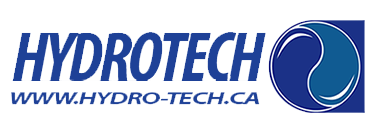The Ins and Outs of Bottom Cleaning
If you own a boat and keep it in the water for extended periods of time, bottom jobs are a major part of essential maintenance. Bottom cleaning keeps organisms from attaching to the hull and affecting a boat’s speed, performance and durability.
Cleaning
The process of boat cleaning starts as soon as the hull clears the water. Your marine painting technician will remove slime and growth while the bottom of the boat is still wet, since it all sticks to the hull like cement once it’s dry. Using a pressure washer, the technician will knock off any organisms and debris, while hard growth can be handled with a sturdy scraper.
Areas of loose paint should be knocked off during pressure washing—this is entirely normal and even beneficial for preparing the surface to take paint. Ask the yard worker to make a few passes with the pressure washer to knock loose as much paint as possible.
Stripping
If your paint is in very poor condition, the next step in boat cleaning is stripping away any existing paint that could compromise the new coat of paint. The technician will look for any signs of adhesion failure where old paint is flaking or lifting.
Stripping the boat of all paint is the most effective way to ensure the fresh coat will adhere to the surface as strongly as possible. While you can use a chemical stripper to remove the paint, it’s better for the environment and easier on the technician to use a hook scraper for stripping.
Sanding
If your paint is in reasonably good condition, you should have it sanded rather than stripped completely. Your technician will use a grinder and sanding discs to carefully remove the finish on the hull. It’s best to sand away most of the previous application—the more coats you have on your boat, the more brittle the built-up paint can be. Prevent flaking by sanding the hull thoroughly and consistently.
Stirring
The paint used on boats is specially formulated and requires plenty of stirring for the copper and pigment to distribute evenly in the mixture. The technician will use a paint shaker, if available, or a drill-powered mixing paddle to mix the paint, making sure that all copper is dredged from the bottom of the container. This simple step is one that can’t be skipped since copper needs to be evenly distributed to protect all areas of the hull.
Painting
Your technician will then roll paint onto the hull with a short-nap roller cover. Depending on the type of paint being used, your boat will need about three to four coats with no sanding or other prep work needed between coats. Bottom paint should dry at least overnight before finishing touches (including the boot stripe) are added.
Is your boat overdue for bottom cleaning? Reach out to the experts at Hydro Tech. We come to you and perform comprehensive boat cleaning and painting to preserve your vessel for the long haul. Call today to schedule your service appointment!
Categorised in: Boat Hull Cleaning
This post was written by Writer

